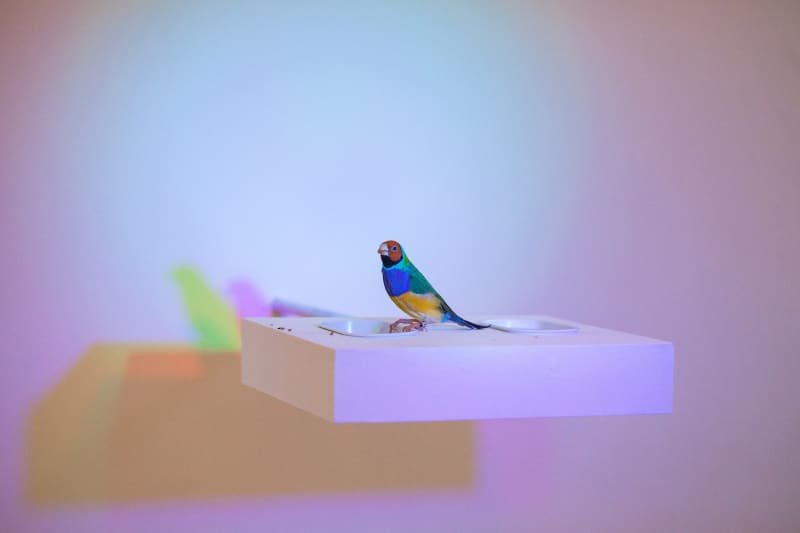How do we see ourselves and other beings in this world? The propositions of Romain Dumesnil construct, inhabit and conceive the artistic practices and the exhibition space as a living operative, a working site. Here, the artist is an operator of passages through the boundaries of domestication.
In the maneuvers of transposition from the ‘outer’ – the locus of living objects - towards the ‘inner’ – the confined space of the gallery – supposed opposites are confronted. By questioning the modernist dichotomies - nature / culture; animality / humanity - the perspective is directed towards a hybrid unity, configured through the diversity of all things that are interconnected. There, viewpoints are inverted.
In the encounter with the naked passivity of the animal or with active chemical processes in the exhibit, we are observed, while we observe. When we view the other’s view, it is in turn, aimed at us. We are all alive and seen; a naked animal facing another animal, a dressed man (enveloped in clothes). With the nakedness of the non-human, we are the ones who are exposed in the exhibit. It is possible to feel a sort of animal-being in being with the animal.
Would that which afflicts us be some sort of shame against the indecency of the things we domesticate, while also being domesticated ourselves? Who, then, is the animal?
The white cube of the gallery forces the institution into another dichotomy ‘outer / inner’: it isolates, limits, restricts, detains, with its enclosure of walls, ceiling, floor, all which confine, here, animals. White cube, cage. The operations proposed by Romain Dumesnil, of transposing from one supposedly ‘outer’ to another supposedly ‘inner’ triggers the processes of domestication, of the other and of itself, between subjection and submission – of the artistic practices included.
Derrida (1997) evokes limitrophy, to designate not only that which is born and grows at the limit, around the limit, by maintaining the limit, but also what feeds the limit, generates it, raises it, and complicates it. But what if, instead of asking whether or not there is a discontinuous limit, we could shift our focus to that which becomes a limit when the boundary no longer forms a single indivisible line. This laboratory exhibit is an artistic exercise in this direction.
On this earth, under this sky - where the gallery lies - we are contaminated; in pluralities that do not allow themselves to be united into a single figure of animality as opposed to humanity, of that which is natural as opposed to artificial, of domestication as opposed to that which is wild. A hybrid emerges, also, through the power of art, which expands the boundaries that grow and multiply by feeding on the limits. These limits, unknown, are not where things end, but rather where other things begin; for a future, hybrid and plural. To follow.
Michelle Sommer
* The title of the exhibition is a poetic allusion to Jacques Derrida’s text ‘L’animal que donc je suis (suivre)’, 1997. See: DERRIDA, Jacques. The Animal That Therefore I Am (More To Follow). São Paulo: UNESP Publishing House, 2002.

